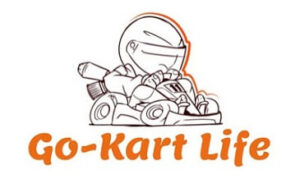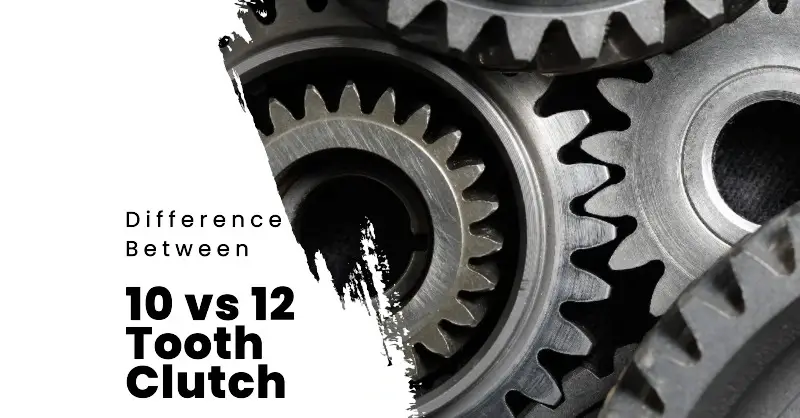In this article, I will explore the differences between 10-tooth and 12-tooth clutches, both popular multi-plate designs in the automotive industry. Understanding these differences is crucial for making informed decisions about their application and performance.
I’ll conduct a comparative analysis of these two types of clutches, looking at the distinctions in design characteristics that directly impact operational efficiency, durability, and the overall driving experience of vehicles using either type. I’ll examine how the number of teeth affects factors like torque transfer capacity, heat dissipation properties, and maintenance requirements.
My goal is to provide you with comprehensive knowledge about the advantages and disadvantages of each configuration, helping you determine which option may better suit your specific needs and preferences regarding vehicle usage patterns and power delivery responsiveness.
| Key Takeaways |
|---|
| Clutch systems, particularly those with 10-tooth and 12-tooth configurations, play a crucial role in the automotive industry, affecting the transmission of torque, rotation, and overall vehicle performance. |
| The tooth count of a clutch impacts factors such as torque transfer capacity, heat dissipation properties, and maintenance requirements, making it essential to understand the differences between 10-tooth and 12-tooth configurations. |
| Gear ratios, which are affected by the tooth count, are critical in determining the performance characteristics of a vehicle, including torque, acceleration, and top speed. |
| Chain compatibility is a key distinction between 10-tooth and 12-tooth clutches, influencing their efficiency, longevity, and suitability for specific applications (heavy-duty or lightweight operations). |
| Ensuring proper compatibility between the clutch and the engine, as well as adhering to installation and maintenance guidelines, is vital for optimal performance, longevity, and safety in a vehicle's transmission system.. |
Related Article: Go-Kart Clutch – The Ultimate Guide
Number Of Teeth
As the gears of a mechanical system mesh-like intricate puzzle pieces, so does the relationship between clutch sprockets and their corresponding number of teeth. This harmonious dance is essential for achieving optimal performance in various applications involving speed, torque, and power transmission.
Delving into clutches with 10 and 12 teeth, one observes that these configurations differ significantly in gear ratio and chain compatibility. A higher tooth count alters the overall gearing setup, affecting acceleration and top speed.
Thus, understanding this delicate interplay becomes crucial when selecting the ideal clutch design for specific purposes.
Gear Ratio
The gear ratio is a crucial factor in determining the performance characteristics of a go-kart, specifically its torque and top speed.
The combination of the clutch’s tooth count and the rear axle sprocket’s tooth count directly affects this ratio, ultimately influencing how the engine power is translated to the wheels.
| Clutch Type | Rear Axle Sprocket | Gear Ratio |
|---|---|---|
| 10T Clutch | 60-tooth | 6:1 |
| 12T Clutch | 60-tooth | 5:1 |
A higher gear ratio increases torque and acceleration but decreases top speed. In contrast, a lower gear ratio offers less torque and slower acceleration with a potentially greater top speed.
Therefore, selecting an appropriate gear ratio for your specific go-kart usage can significantly impact its overall performance capabilities.
Related Article: What is the Best Gear Ratio for Predator 212cc
Chain Compatibility
It is undisputed that chain compatibility plays a pivotal role in determining the efficiency and longevity of clutches in various applications.
The primary difference between a 10-tooth clutch and a 12-tooth clutch lies in their respective compatibilities with different types of chains, which ultimately affects their performance on specific machinery or equipment.
| Clutch Type | Rear Axle Sprocket | Gear Ratio | Chain Compatibility | Applications |
|---|---|---|---|---|
| 10T Clutch | 60-tooth | 6:1 | #40 (1/2′ pitch), #41 (1/2′ pitch), #420 (1/2′ pitch) | Heavy-duty |
| 12T Clutch | 60-tooth | 5:1 | #35 (3/8′ pitch) | Lightweight |
Thus, understanding one’s requirements vis-à-vis chain compatibility becomes essential when choosing between these two types of clutches.
Compatibility With Different Engines
10-tooth and 12-tooth clutches are often paired with different types of engines, depending on the desired performance characteristics. A smaller engine or one designed for low-speed applications will likely use a 10-tooth clutch. In contrast, larger engines and those intended for high-speed operations may utilize a 12-tooth clutch.
When considering compatibility between these two types of clutches and various engines, evaluating factors such as torque output, gear ratios, and overall system requirements is essential.
Modifications or adjustments may be necessary to ensure optimal performance and compatibility between the chosen engine and a 10-tooth or 12-tooth clutch.
Related Article: Why is Go-Kart Clutch Smoking and How to Prevent or Fix The Issue
Installation And Maintenance
Installation and maintenance of 10-tooth and 12-tooth clutches are crucial to ensure optimal performance, longevity, and safety.
While the installation involves carefully selecting clutch components, alignment with motor shafts, and engagement adjustments, regular maintenance requires periodic inspections for wear and tear, tension adjustment, lubrication, and replacement when necessary.
For a smooth-running transmission system in either configuration, it is vital to adhere to manufacturer guidelines on proper lubrication techniques using high-quality greases or oils.
Maintaining correct alignment between the clutch assembly and corresponding gear train elements also helps prevent premature wear or failure due to misalignment.
Tension adjustments should be performed per specifications to avoid excessive slack or tightness that may compromise power transfer efficiency or accelerated component degradation.
Related Article: How to Adjust a Centrifugal Clutch on a Go-Kart
Which Is Better, A 10 Or 12 Tooth Clutch?
Having discussed the installation and maintenance aspects of clutches, it is essential to delve into their differences.
Specifically, the distinctions between 10-tooth and 12-tooth clutches are crucial in determining which option may be better suited for particular applications.
The primary difference between a 10-tooth clutch and a 12-tooth clutch lies in the number of teeth on each clutch’s sprocket.
This variation directly affects the performance characteristics of the power transmission system wherein these components are employed.
A higher number of teeth typically results in smoother engagement due to increased contact points, potentially leading to reduced wear and enhanced longevity.
However, other factors, such as torque requirements and gear ratios, must also be considered when selecting an appropriate clutch for specific uses.
Related Article: Do Go-Karts Have A Clutch?
Conclusion
The number of teeth affects their performance in gear ratios, chain compatibility, engine fitting, installation process, and maintenance needs.
One key difference is how they impact gear ratios, directly influencing an engine’s power transmission. More teeth lead to lower gear ratios, giving more torque but a lower top speed. On the other hand, clutches with fewer teeth have higher gear ratios, which means less acceleration but a higher top speed.
Also, chain compatibility is crucial when deciding between a 10 or 12-tooth clutch. Proper alignment with the right chains improves efficiency and performance. Choosing the right clutch size for a specific engine model ensures smooth integration and optimal function.
Ultimately, 10-tooth and 12-tooth clutches have different features that suit different preferences and driving styles. You should consider all the factors mentioned before deciding. While neither option is always better, knowing their unique qualities will help you make the right choice for your needs.

Goran, an experienced go-kart racer, fuels GoKartLife.com with his passion and expertise. He offers valuable insights and tips for fellow enthusiasts, fostering the growth of the go-kart community. Join Goran at GoKartLife.com and immerse yourself in this exhilarating sport.

